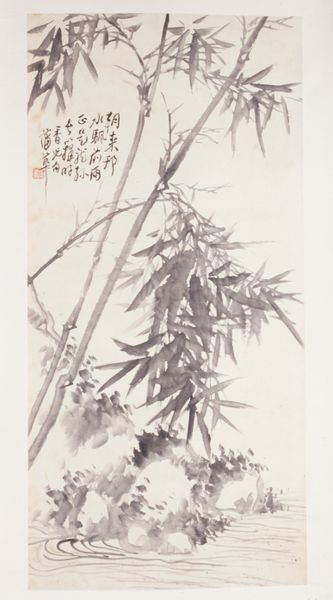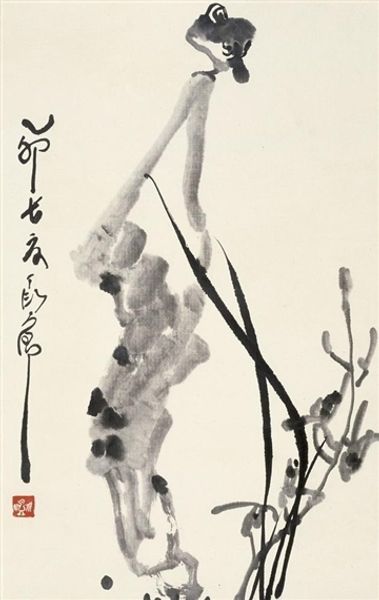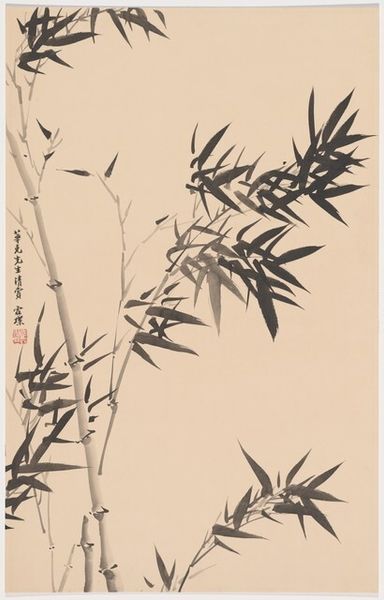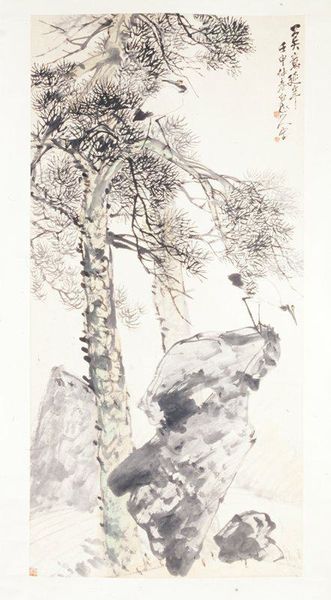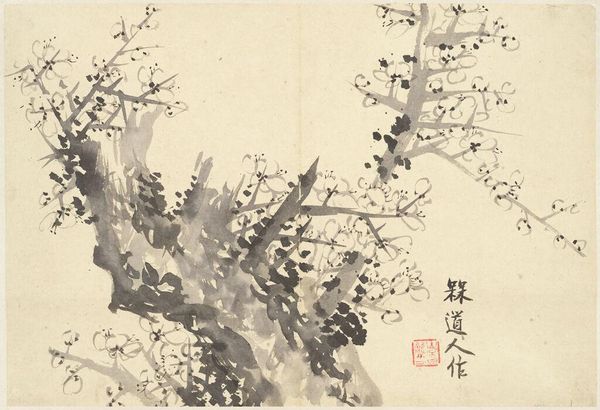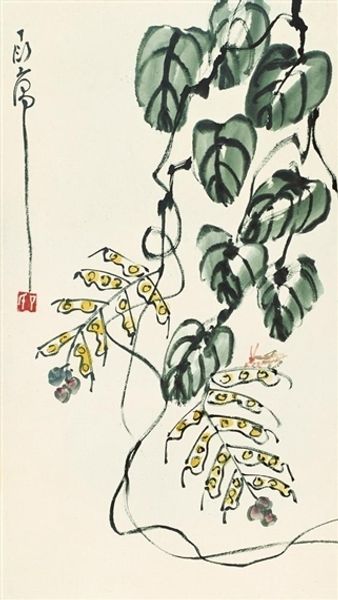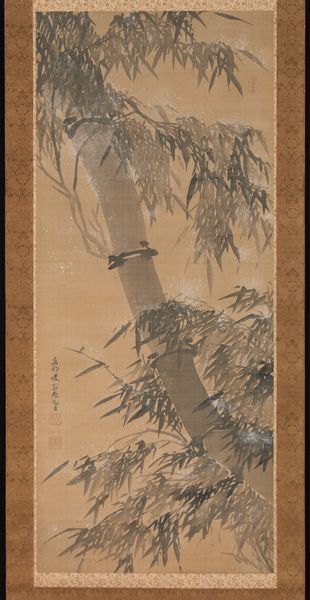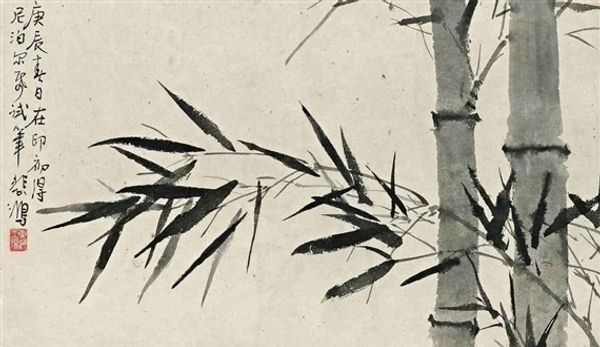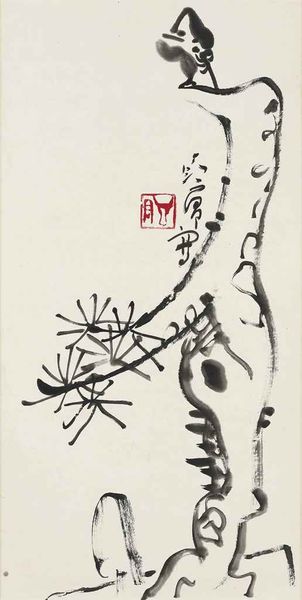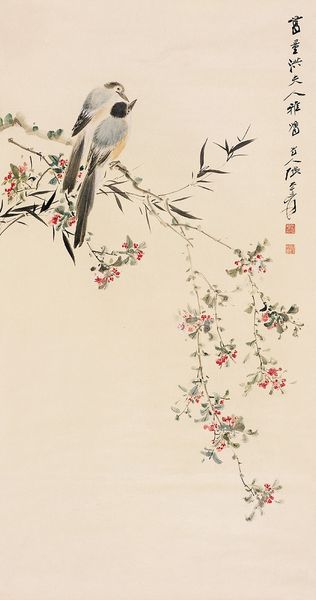
painting, ink
#
organic
#
painting
#
asian-art
#
ink
#
plant
#
botany
#
calligraphy
Copyright: Public domain China
Editor: Here we have an ink painting titled "Bamboo" by Xu Beihong. The stark black and white feels so immediate, capturing a sense of the plant's natural form. What strikes you when you consider this piece? Curator: I’m interested in the historical context. Bamboo paintings were frequently produced, often functioning as a subtle form of cultural production under oppressive regimes, such as periods of foreign domination. Consider how the swift brushstrokes, enabled by the materiality of ink and paper, allow for efficient, reproducible, and readily distributed artworks. Do you see this piece speaking to broader socio-political contexts? Editor: That's fascinating! So, the ease of creating these paintings allowed for artistic expression even under difficult conditions. I suppose the readily available materials—bamboo itself, plus the ink and paper—would’ve contributed to that. Do you think the symbolism of bamboo plays a role too? Curator: Precisely! Bamboo embodies resilience and flexibility. Now consider, for whom were such paintings intended, and what narratives might the representation of bamboo uphold during this period? What does that relationship of maker, material, and message suggest to you? Editor: I hadn't considered the social implications of the materials themselves. It really shows how deeply intertwined art, material culture, and historical context can be. Curator: And that the consumption and availability of materials themselves carries encoded ideologies that must be deconstructed to interpret a piece!
Comments
No comments
Be the first to comment and join the conversation on the ultimate creative platform.
